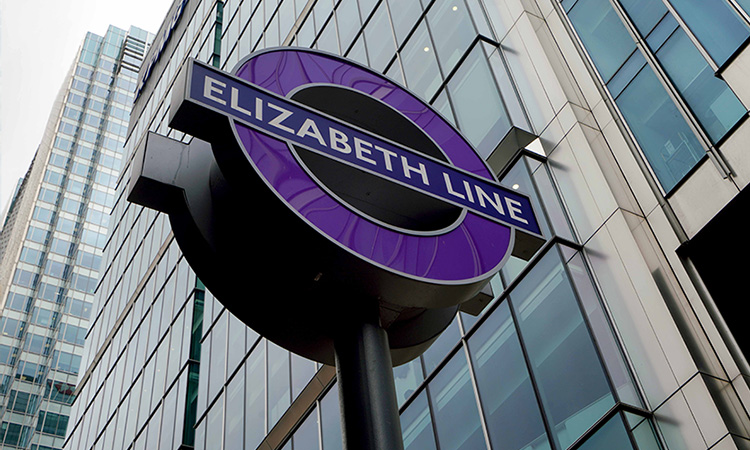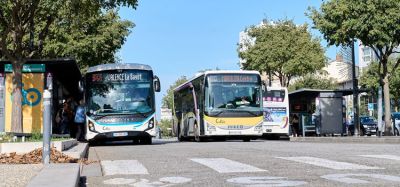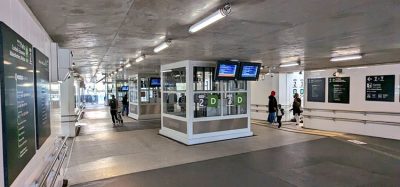TfL introduces new full peak Elizabeth line timetable
- Like
- Digg
- Del
- Tumblr
- VKontakte
- Buffer
- Love This
- Odnoklassniki
- Meneame
- Blogger
- Amazon
- Yahoo Mail
- Gmail
- AOL
- Newsvine
- HackerNews
- Evernote
- MySpace
- Mail.ru
- Viadeo
- Line
- Comments
- Yummly
- SMS
- Viber
- Telegram
- Subscribe
- Skype
- Facebook Messenger
- Kakao
- LiveJournal
- Yammer
- Edgar
- Fintel
- Mix
- Instapaper
- Copy Link
Posted: 23 May 2023 | Intelligent Transport | No comments yet
Following remarkable success in its first year of operation and significant contributions to housing, job opportunities and economic growth, the Elizabeth line’s new full peak timetable brings faster journeys and increased connectivity.


Credit: Transport for London
Transport for London (TfL) has announced that the Elizabeth line’s full peak timetable has been implemented, bringing increased frequencies, improved connectivity and faster travel times. Between Paddington and Whitechapel, peak time frequencies have risen from 22 to up to 24 trains per hour, with 16 trains per hour during off-peak hours. The extension of the peak period has further enhanced capacity.
Key changes include additional services during peak hours between Liverpool Street National Rail station and Gidea Park, benefiting passengers using the Bishopsgate entrance. In the west, there are more peak services from Reading, with some trains previously operated by Great Western Railway now running as Elizabeth line services but with reduced stops. The elimination of significant pauses for trains outside Paddington has also reduced journey times for customers travelling from the west to central London.
Furthermore, around 30% of journeys to and from Heathrow now use the Elizabeth line, diverting passengers who previously relied on the Heathrow Express. The new timetable offers more frequent services to and from Heathrow, including direct trains from Shenfield to Heathrow Terminal 5 throughout the day. The airport currently receives six Elizabeth line trains per hour, serving Terminal 2&3, with four continuing to Terminal 4 and two to Terminal 5.
Tottenham Court Road has experienced the highest growth in demand since the Elizabeth line’s inception, with over 100,000 additional daily journeys passing through the station, doubling its usage over the year. Farringdon, Whitechapel, and Abbey Wood have also seen significant increases in demand, with 100,000, 60,000, and 30,000 extra journeys respectively, nearly doubling their previous volumes.
Journeys to Canary Wharf, including the Elizabeth line, London Underground, and DLR, now surpass pre-pandemic demand on selected days. During peak hours, 12 trains per hour operate between Canary Wharf and Abbey Wood, restoring the original frequency since the line’s opening. Peak periods in the morning and evening have been extended, further boosting capacity.
Since launching in May 2022, the Elizabeth line has played a vital role in London and the UK’s post-pandemic recovery, driving public transport demand and attracting approximately 140,000 additional daily journeys. Currently, the line averages around 3.5 million journeys per week, including approximately 600,000 on weekdays. Financially, the railway is expected to break even by the end of the 2023/24 financial year.
The Mayor of London, Sadiq Khan, said: “The introduction of the final full timetable marks the completion of the Crossrail project, and I’m delighted that passengers will have even more frequent services to get them across the capital and beyond. The Elizabeth line is helping to build a better London – one which is safer, fairer, greener and more prosperous city for all Londoners.”
London’s Transport Commissioner, Andy Lord, said: “Seeing millions of people using the line each week is a testament to the hard work that everyone involved in the project put in to get us to where we are today, and we look forward to even more customers using the railway now that the new timetable has further improved the service. The Elizabeth line has clearly demonstrated the value of investing capital in London’s transport infrastructure.”
Transport Minister Richard Holden, said: “I’m proud the government helped make this possible through its £9 billion investment, which has not only helped passengers get from A to B and reconnect with loved ones, but also created more than 55,000 jobs right across the UK.”
Related topics
Accessibility, Journey Planning, Mobility Services, Passenger Experience, Public Transport, Workplace
Related modes
Rail
Related countries
United Kingdom
Related organisations
Transport for London (TfL), UK Government
Related people
Andy Lord, Richard Holden, Sadiq Khan








